In Huntington's Disease, An Area Of The Brain Implicated Is The
In huntington's disease, an area of the brain implicated is the. In most animal and cellular models of HD the neurotoxicity of mutant Htt is enhanced. The area of brain most damaged in early Huntingtons disease is the dorsal striatum made up of the caudate nucleus and the putamen. This causes certain portions of the brains to be affected.
HD is a neurodegenerative disorder meaning it is characterized by the degeneration and death of neurons. Pictured above in blue is the striatum an area deep in the brain that plays a key role in movement mood and behavior control. The substantia nigra is an area of the mid brain located at the top of the spinal cord which has been the focus of much work into how Parkinsons affects the brain.
The Huntingtons Disease Collaborative Research Group 1993. The disease is equally common in men and women autosomal. They help smooth out and coordinate movements.
The striatum is the part of the brain that is most affected by HD. Neuroinflammation is a typical feature of most neurodegenerative diseases that leads to an array of pathological changes within the affected areas in. Huntingtons disease is a relatively rare fatal inherited condition that gradually kills off healthy nerve cells in the brain leading to loss of language thinking and reasoning abilities memory.
The basal ganglia are collections of nerve cells located at the base of the cerebrum deep within the brain. Several molecular pathways have been implicated in the process of neurodegeneration involved in Huntingtons disease and provide potential therapeutic targets. Huntington disease is a hereditary disease that begins with occasional involuntary jerking or spasms then progresses to more pronounced involuntary movements chorea and athetosis mental deterioration and death.
Huntingtons disease or Huntingtons Chorea is a progressive hereditary cerebral disorder caused by an abnormal gene. Northwestern Medicine scientists have identified a link between Huntingtons disease and dysfunction of the subthalamic nucleus a component of the basal ganglia a group of brain structures critical for movement and impulse control in a study published in the journal eLife. HD is an inherited neurodegenerative disorder caused by expansion of a CAG repeatwhich is translated into a polyglutamine polyQ stretch in exon-1 HDx1 of Htt.
In Huntington disease parts of the brain that help smooth and coordinate movements degenerate. Huntington disease is caused by gradual degeneration of parts of the basal ganglia called the caudate nucleus and putamen.
Neuroinflammation is a typical feature of most neurodegenerative diseases that leads to an array of pathological changes within the affected areas in.
The substantia nigra is an area of the mid brain located at the top of the spinal cord which has been the focus of much work into how Parkinsons affects the brain. Huntington disease is a hereditary disease that begins with occasional involuntary jerking or spasms then progresses to more pronounced involuntary movements chorea and athetosis mental deterioration and death. The disease is equally common in men and women autosomal. Huntingtons disease HD is a brain disease that is passed down in families from generation to generation. Huntingtons Disease - Brain Regions and their Dysfunctions Huntingtons disease The disease results from an expanded sequence of CAG repeats in the huntingtin gene and leads to a movement disorder with associated cognitive and systemic deficits. This causes certain portions of the brains to be affected. The Huntingtons Disease Collaborative Research Group 1993. With predictive testing allowing the identification of gene-positive individuals prior to disease onset the prodromal stage of Huntingtons disease provides an ideal period for the use of disease-modifying therapy. Northwestern Medicine scientists have identified a link between Huntingtons disease and dysfunction of the subthalamic nucleus a component of the basal ganglia a group of brain structures critical for movement and impulse control in a study published in the journal eLife.
These findings could help understand how the disease unravels and why this brain region is particularly sensitive to degeneration in individuals with Huntingtons. Huntingtons disease HD is a brain disease that is passed down in families from generation to generation. Define Huntingtons disease Is an inherited disease that causes the progressive breakdown degeneration of nerve cells in the brain What are the first symptoms of HD First symptoms are behavior symptoms- personality changes mood swings and depression. HD is an inherited neurodegenerative disorder caused by expansion of a CAG repeatwhich is translated into a polyglutamine polyQ stretch in exon-1 HDx1 of Htt. Huntington disease is a hereditary disease that begins with occasional involuntary jerking or spasms then progresses to more pronounced involuntary movements chorea and athetosis mental deterioration and death. They help smooth out and coordinate movements. These findings could help understand how the disease unravels and why this brain region is particularly sensitive to degeneration in individuals with Huntingtons.
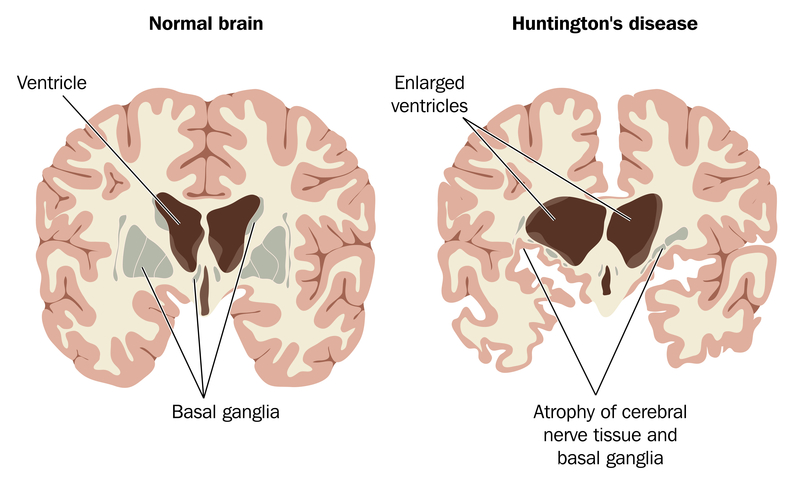


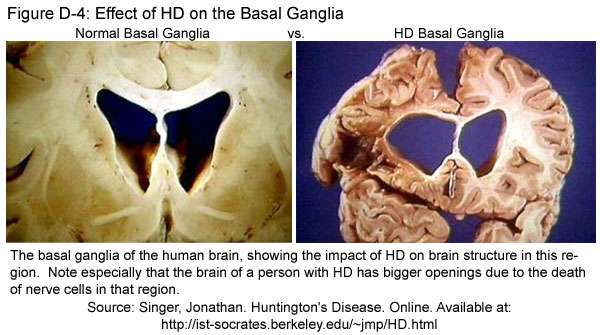

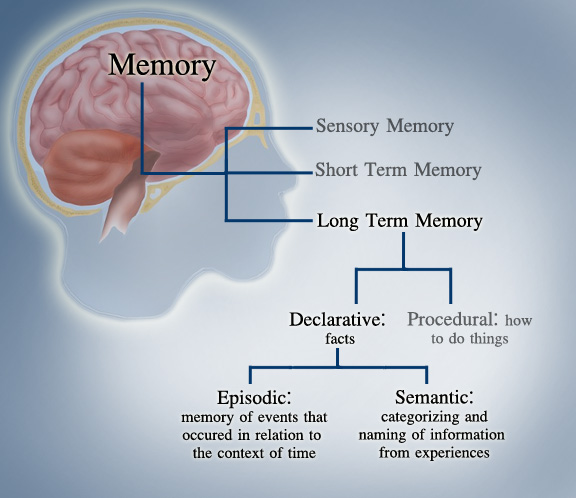


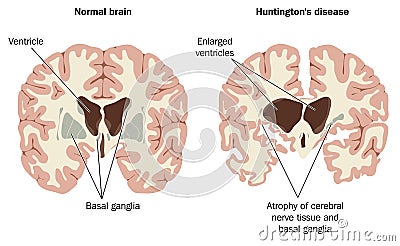

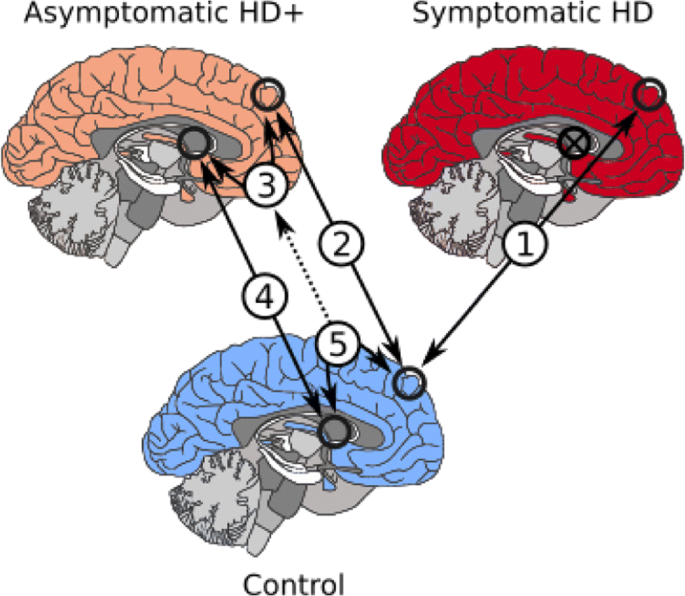



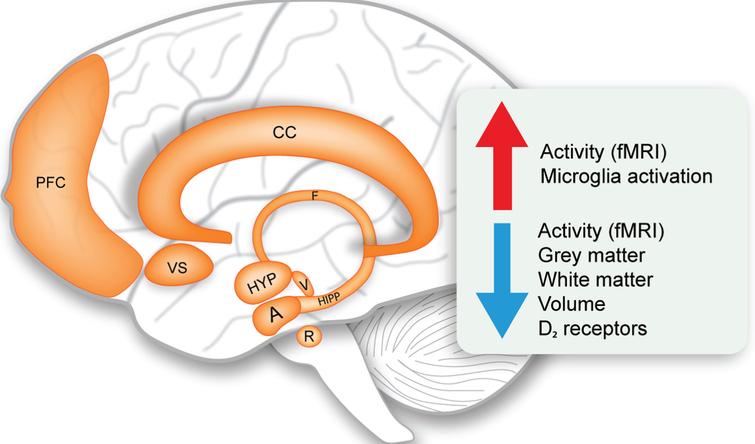
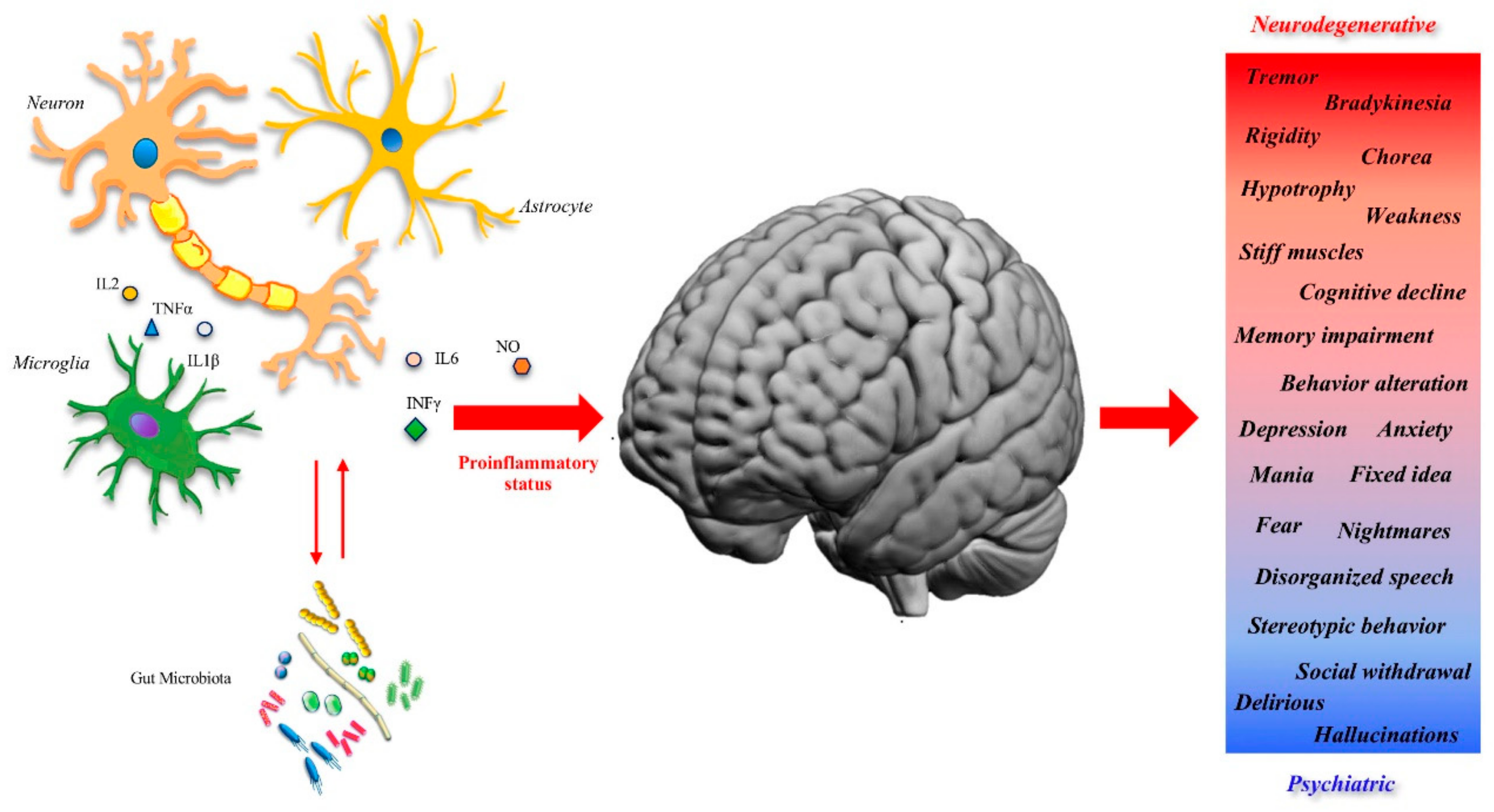

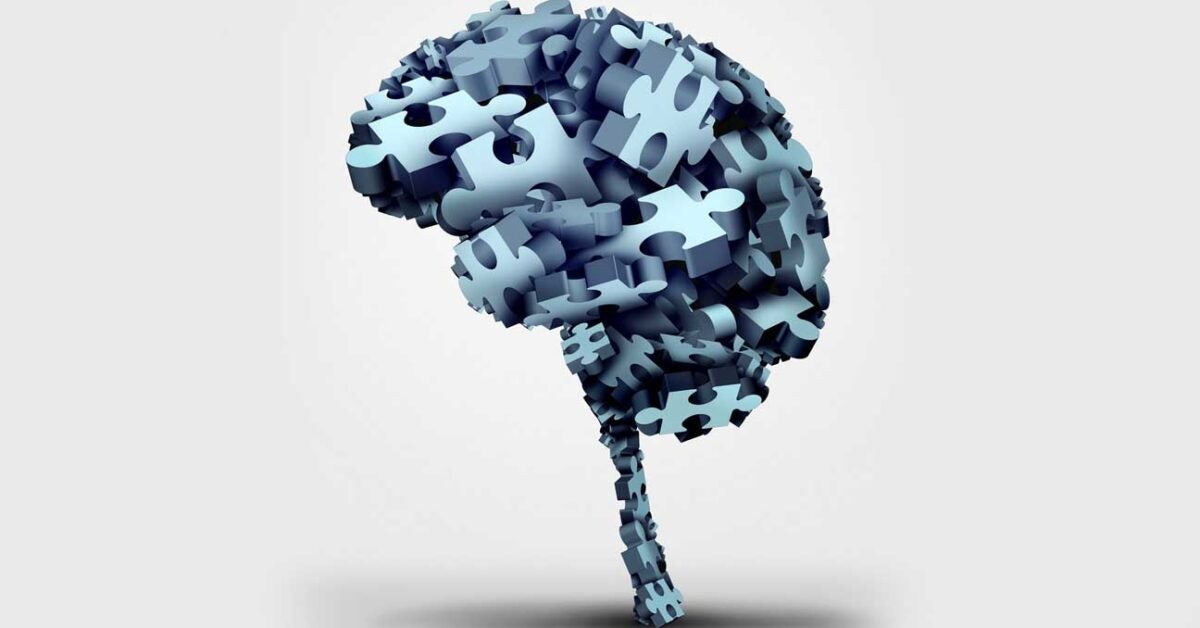

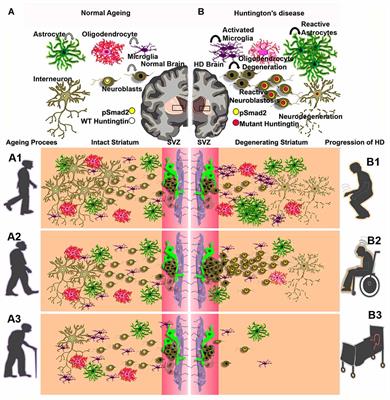
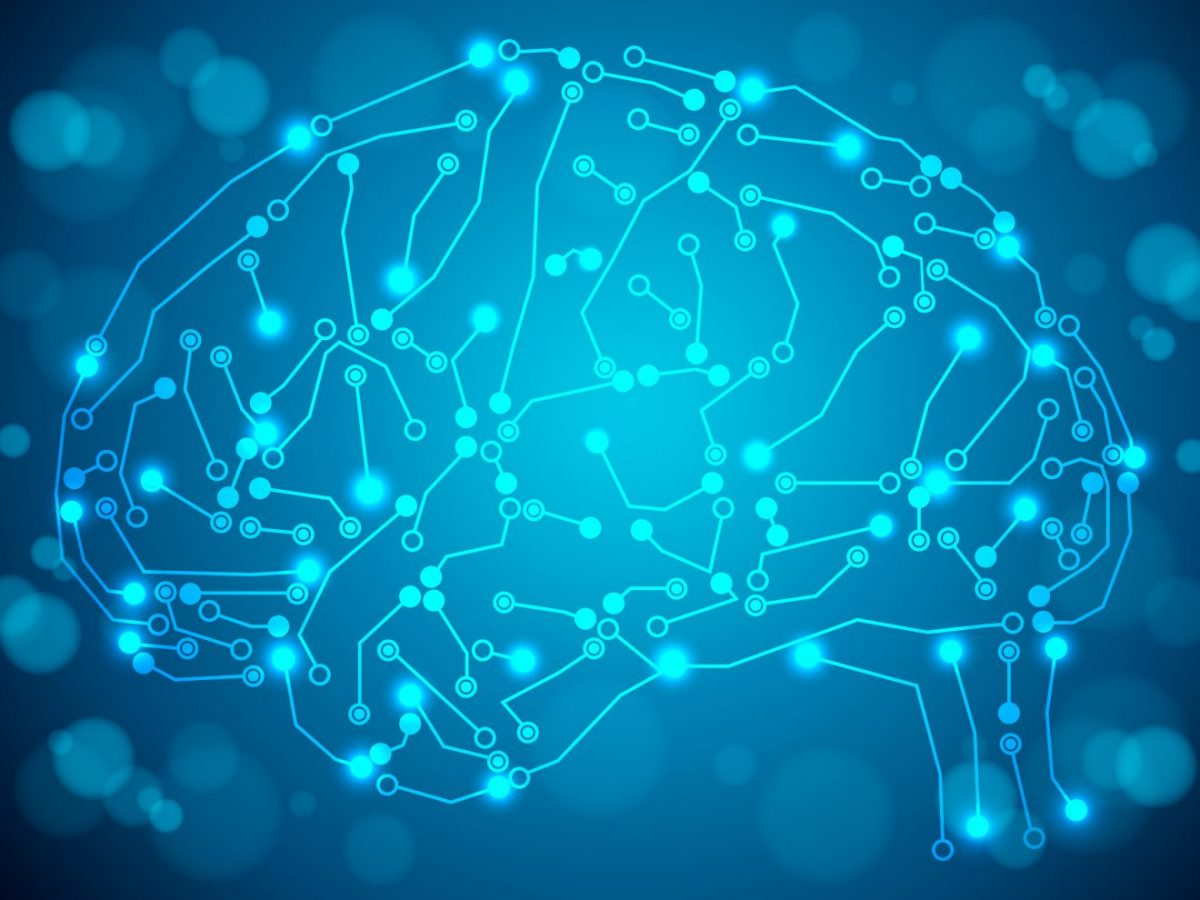

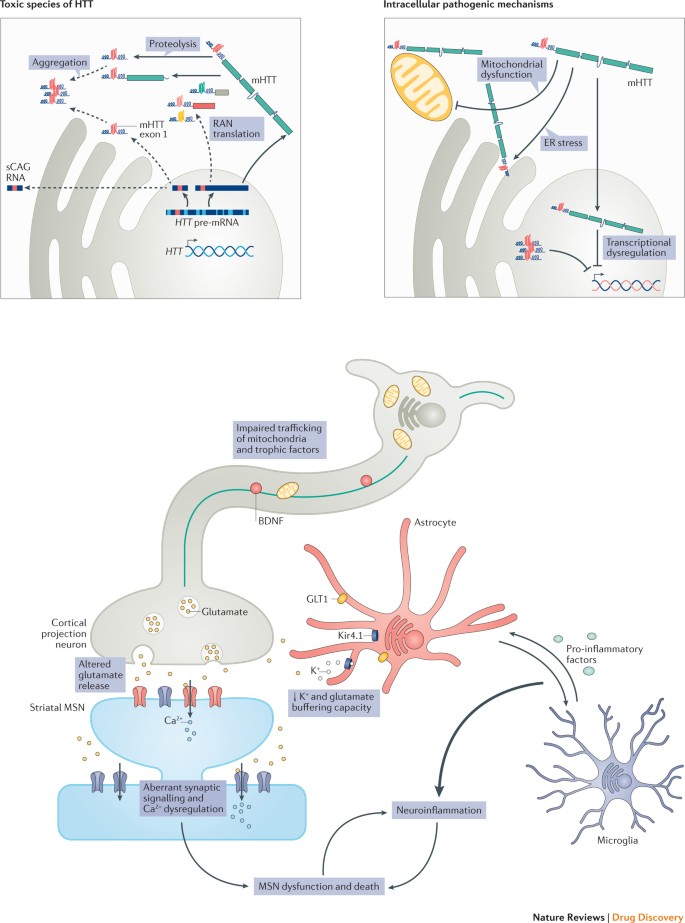

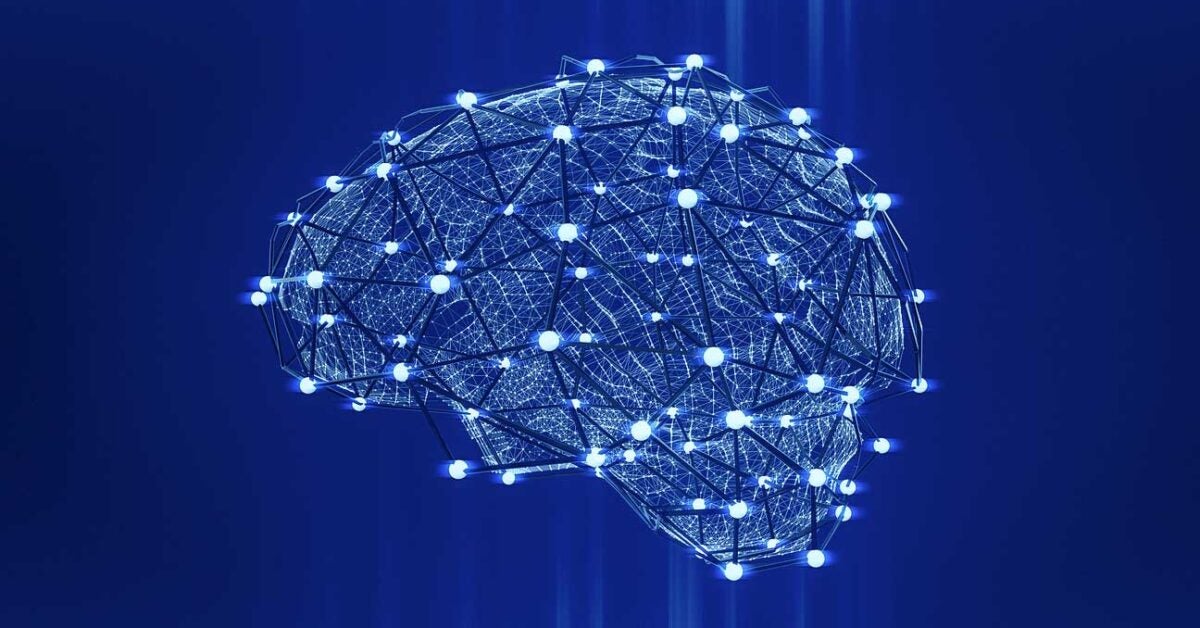

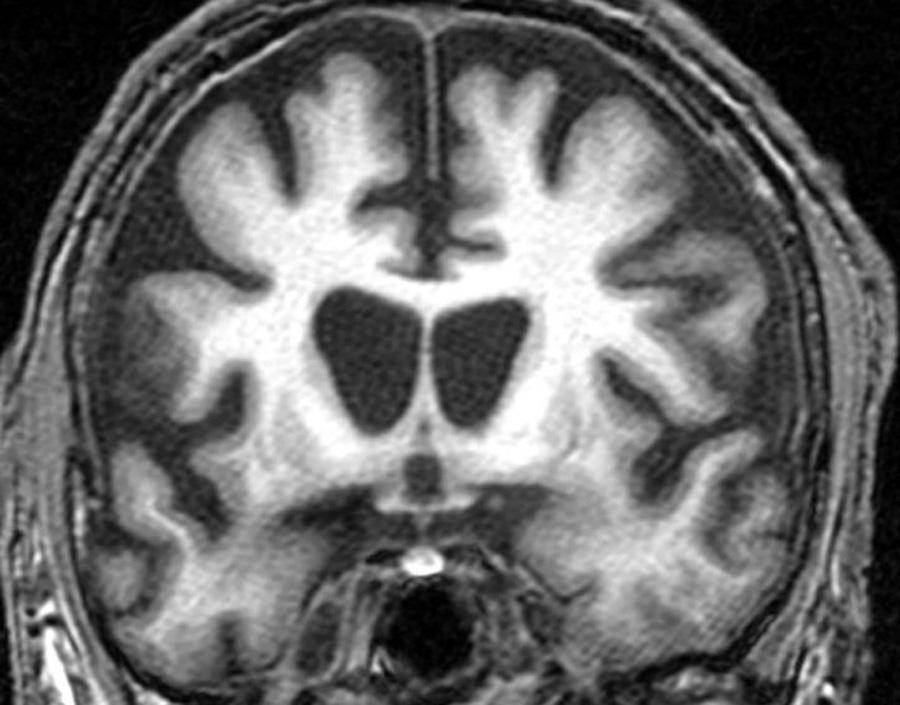
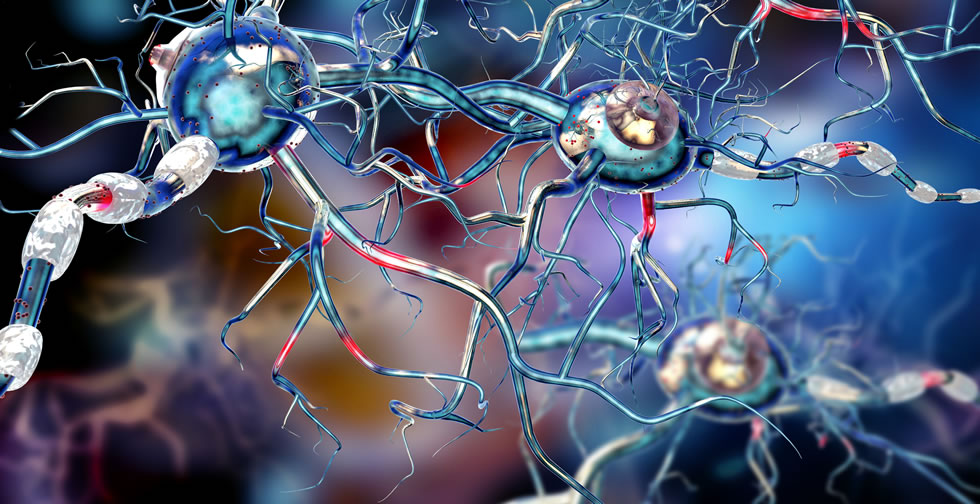





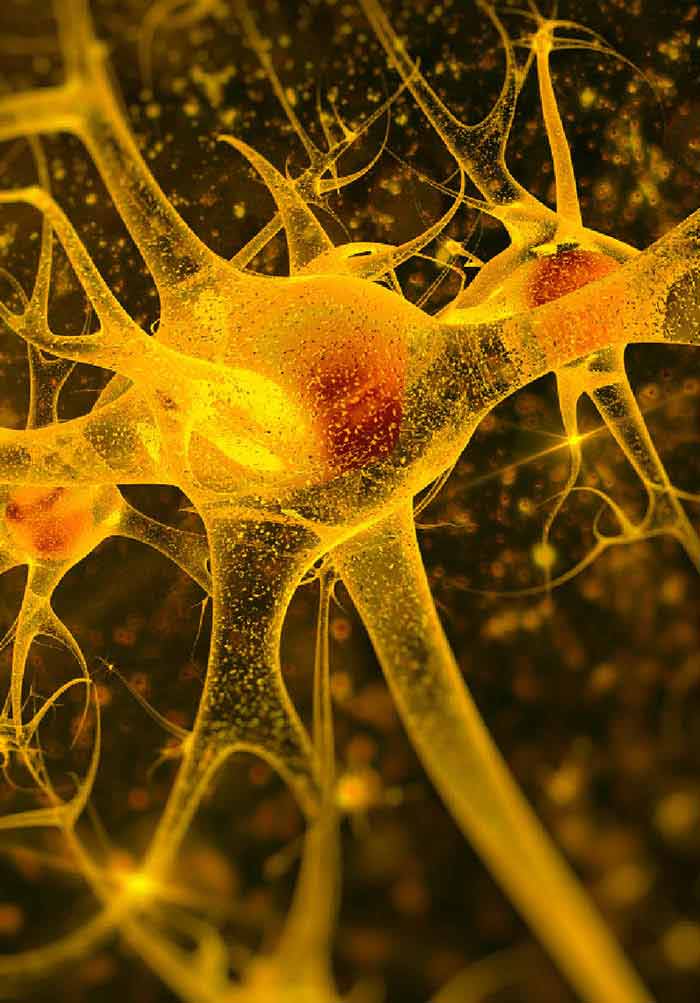
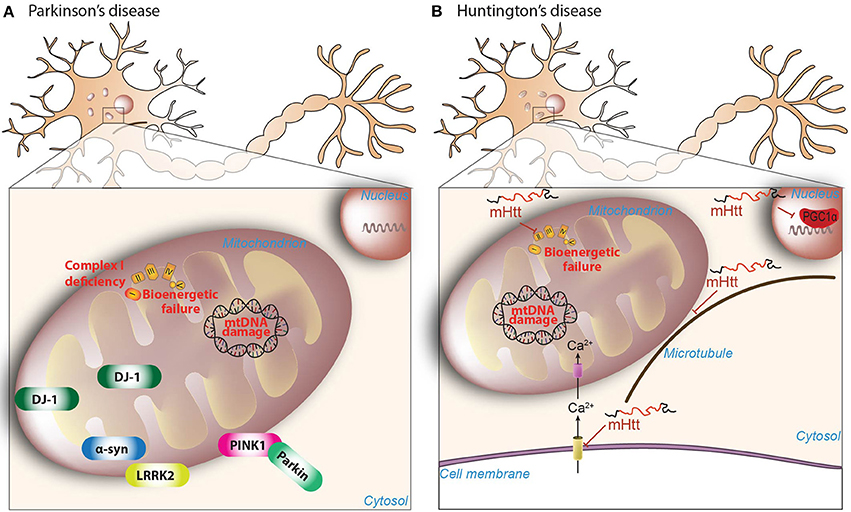






Post a Comment for "In Huntington's Disease, An Area Of The Brain Implicated Is The"